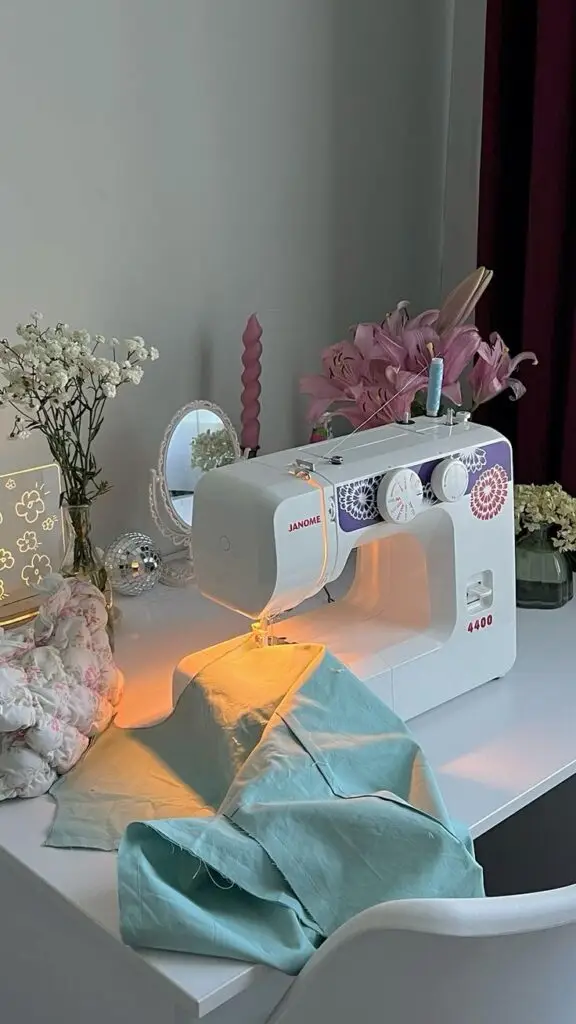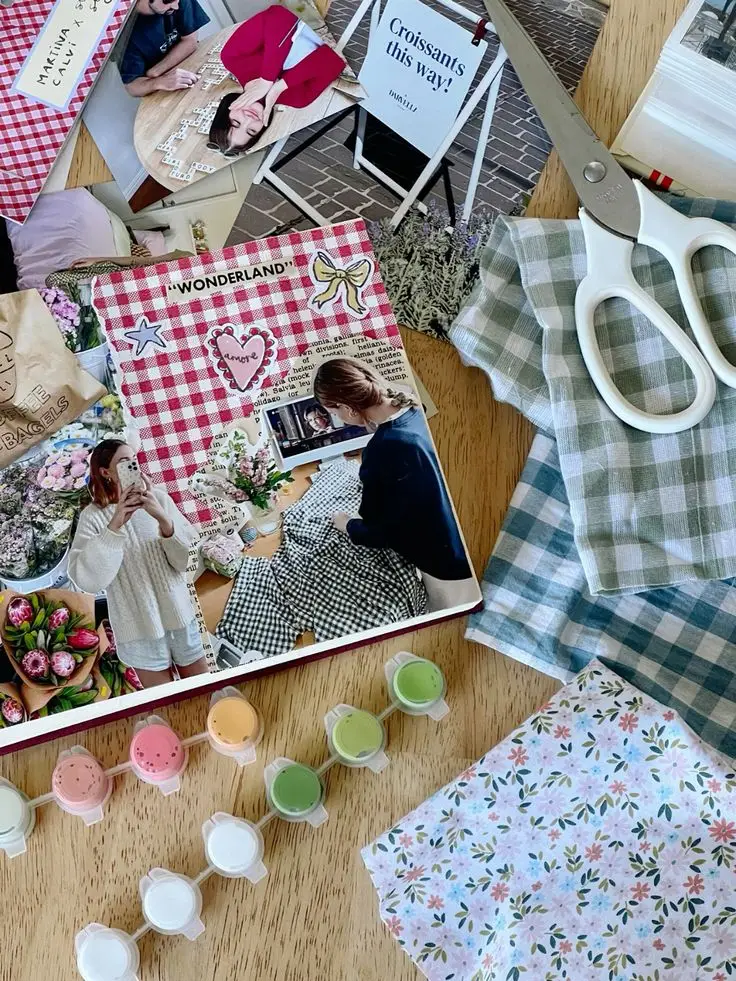Crafting offers more than just a creative outlet; it serves as a powerful tool for enhancing your mental health and well-being. Engaging in crafting activities can significantly reduce stress, improve mood, and boost your overall quality of life. Whether you’re knitting, painting, or building model airplanes, these activities encourage mindfulness and provide a sense of accomplishment that can transform your state of mind.
Incorporating crafting into your daily routine allows you to express yourself and connect with others. Many find joy in collaborative projects, fostering a sense of community that combats feelings of isolation. By dedicating time to these hands-on activities, you can cultivate not only your creativity but also deeper social ties that contribute to personal happiness.
Exploring the myriad benefits of crafting can lead to a more fulfilling life. Embracing this practice can help you navigate the challenges of daily life and find joy in the moment, enhancing your emotional resilience and overall mental well-being.



Key Takeaways
- Crafting reduces stress and enhances mood.
- Engaging in creative activities fosters social connections.
- Regular crafting can improve overall mental well-being.
Exploring the Connection Between Crafting and Mental Health
Crafting offers numerous benefits for mental health, providing both psychological upliftment and a unique avenue for self-expression. Engaging in creative activities can alleviate symptoms of anxiety and depression while enhancing emotional well-being.
The Psychological Impact of Crafting
Crafting has been shown to reduce stress and promote relaxation. When you immerse yourself in a creative task, your mind shifts focus from daily worries. This shift can lower cortisol levels, the hormone associated with stress.
Engaging in arts and crafts can enhance your sense of accomplishment. Completing a project offers a tangible result, which fosters pride and boosts self-esteem. These feelings can counteract symptoms of anxiety and depression.
Research indicates that crafting stimulates areas of the brain associated with movement, creativity, and emotions. This engagement can improve cognitive functions and enhance overall mental wellness. The act of creating becomes both a therapeutic escape and a source of joy.
Crafting as a Form of Expression and Communication
Crafting allows for personal expression without the constraints of traditional communication. You can convey emotions and narrate experiences through your chosen medium. Whether it’s painting, knitting, or woodworking, each piece can represent your feelings.
Artistic expression can serve as an outlet for processing complex emotions. You may find that crafting helps articulate what words often fail to capture. This transformation can lead to improved emotional clarity and resilience.
Collaborative crafting activities can also foster connection with others. Sharing your creative endeavors builds community and support networks, enhancing your social ties. Strong social connections are crucial for emotional health, further emphasizing the dual benefits of crafting for both individual and communal well-being.



Crafting Activities and Their Specific Benefits
Engaging in various crafting activities can greatly enhance your mental well-being. These activities offer unique therapeutic benefits, promote mindfulness, and provide a sense of accomplishment. Here are some specific crafting activities and the advantages they present.
The Therapeutic Benefits of Knitting and Crocheting
Knitting and crocheting can be calming and meditative. The repetitive motions of these crafts induce a state of flow, where your mind becomes focused and less cluttered.
This focus helps in reducing anxiety and improving mood. The tactile nature of working with yarn can be soothing, creating a sense of comfort and relaxation. Additionally, completing a knitting or crochet project gives a sense of achievement, boosting your self-esteem and providing a tangible reminder of your efforts.
Meditative Effects of Pottery and Ceramics
Working with pottery and ceramics involves both creativity and mindfulness. Shaping clay requires concentration, which fosters a mindful state; you become intensely aware of the present moment.
This process can serve as a form of stress relief, drawing your attention away from daily worries. The satisfaction of crafting a piece from raw materials allows for personal expression while promoting relaxation. The sensory experience of molding and glazing enhances the therapeutic qualities of this medium.
Mental Stimulation from Arts Like Painting and Drawing
Painting and drawing stimulate the mind in unique ways. These creative outlets not only encourage self-expression but also improve cognitive function.
Creating art requires critical thinking and problem-solving skills as you make decisions about color, form, and composition. Engaging in these activities can enhance dexterity and improve your attention to detail. The emotional release experienced while putting brush to canvas or pencil to paper often leads to increased feelings of joy and fulfillment.
Fine Motor Skills and Attention to Detail in Sewing and Embroidery
Sewing and embroidery enhance fine motor skills and require significant attention to detail. These crafts involve precise movements, fostering hand-eye coordination and dexterity.
Working on intricate patterns can be both challenging and rewarding. This focused activity also encourages mindfulness, allowing you to be fully present and engaged. Completing a sewing or embroidery project results in a tangible creation that reflects your efforts, reinforcing a sense of accomplishment and pride.



Psychological and Emotional Rewards of Crafting
Engaging in crafting provides notable psychological and emotional benefits. The activities involved can significantly boost self-esteem and confidence, while also engaging your brain’s reward system, leading to enhanced feelings of happiness.
Enhancing Self-Esteem and Confidence Through Achievement
Completing a crafting project gives you a tangible sense of accomplishment. This sensation can elevate your self-esteem, especially when you see the finished product. As you develop your skills, your confidence increases, encouraging you to try more complex projects.
Achieving crafting goals fosters a positive self-image. You can use various materials, from yarn to paint, allowing creativity to flourish. The act of creating something unique reinforces your identity and capabilities, leading to a deeper appreciation of your abilities.
Crafting and the Role of Dopamine Release
Crafting can stimulate the release of dopamine, a neurotransmitter linked to pleasure and reward. When you finish a project or successfully execute a technique, your brain responds positively. This chemical reaction promotes feelings of happiness and satisfaction.
The anticipation of starting a new project or the excitement of a new idea can also trigger dopamine release. Regularly engaging in crafting keeps this positive cycle active, contributing to ongoing emotional stability. Each session can become a source of joy, enhancing your overall mood and resilience against stress.



Social and Community Aspects of Crafting
Crafting extends beyond individual benefits, fostering social connections and community support. Engaging in crafting activities can strengthen bonds and empower individuals, creating a positive impact on public health and resilience.
Building Social Connections Through Shared Interests
Participating in crafting groups allows you to meet people with similar interests. Shared activities can lead to meaningful conversations and friendships. Whether you join a local knitting circle or an online DIY group, these interactions can enhance your social network.
In these settings, you exchange skills and ideas, promoting a sense of belonging. Regular gathering for crafting can reduce feelings of isolation. As you collaborate on projects, you build trust and camaraderie, essential for social connection and community well-being.
The Role of Crafting in Building Empathy and Social Support
Crafting provides a platform for emotional expression and support. Engaging in creative activities with others encourages sharing personal stories and experiences. This exchange fosters empathy, making you more attuned to the feelings and needs of others.
Craft initiatives can also serve vulnerable populations, creating safe spaces for dialogue. When you participate in these programs, you’re not just creating art; you’re also building social support. Over time, these connections contribute to resilience and empowerment, enhancing community health and cohesion.



Incorporating Crafting Into Daily Life
Crafting can seamlessly fit into your daily routine, enhancing your overall well-being and providing methods for relaxation and stress relief. Establishing a dedicated crafting space and integrating crafting with other wellness practices can significantly boost life satisfaction.
Creating a Crafting Space for Relaxation and Stress Relief
Designing a specific area for your crafting activities helps in creating a retreat from the digital world. Choose a quiet corner in your home with good lighting and a comfortable seat.
Consider including materials that invite creativity, such as woodworking tools, textile supplies, or coloring books. You may find that surrounding yourself with colorful materials fosters inspiration.
Keep your space organized to reduce distractions and enhance focus. Use storage solutions like cabinets, baskets, or artist trolleys to maintain order.
By establishing this crafting sanctuary, you create a space dedicated to relaxation and self-expression, essential for managing stress.
Integrating Crafting with Other Wellness Practices
You can amplify the mental health benefits of crafting by pairing it with other wellness practices. Consider scheduling specific times for crafting as a part of your daily routine.
Engage in mindfulness while you craft. Focus on the textures of materials, the sounds of tools, and the movements of your hands. This can enhance your overall sense of presence and tranquility.
Incorporate crafting into activities like meditation or yoga. Simple actions like coloring can serve as a meditation alternative, calming your mind.
Explore the therapeutic aspects of textile crafts, which can improve your fine motor skills and provide a sense of accomplishment. By blending these activities, you enhance both physical and mental wellness.






